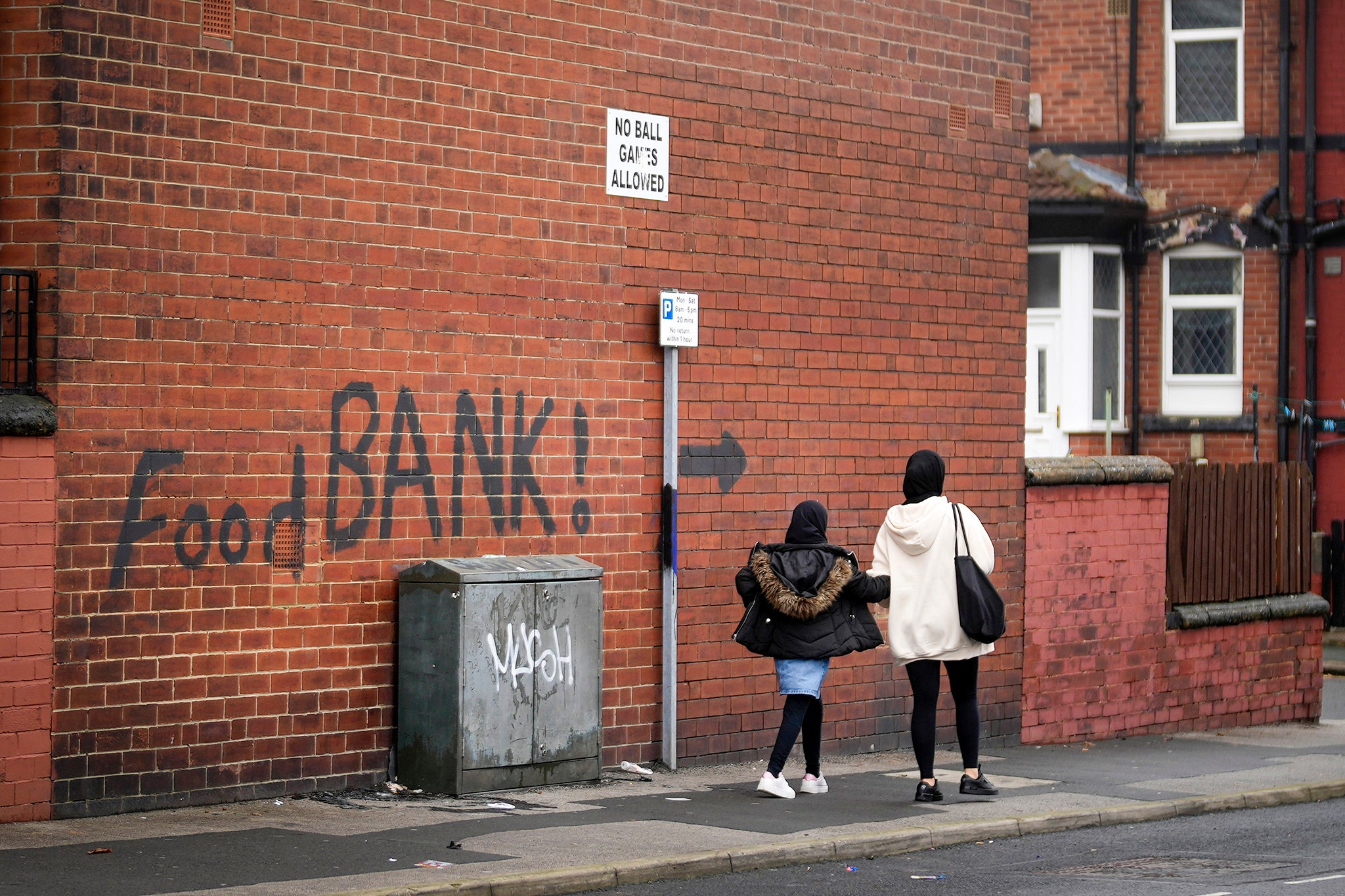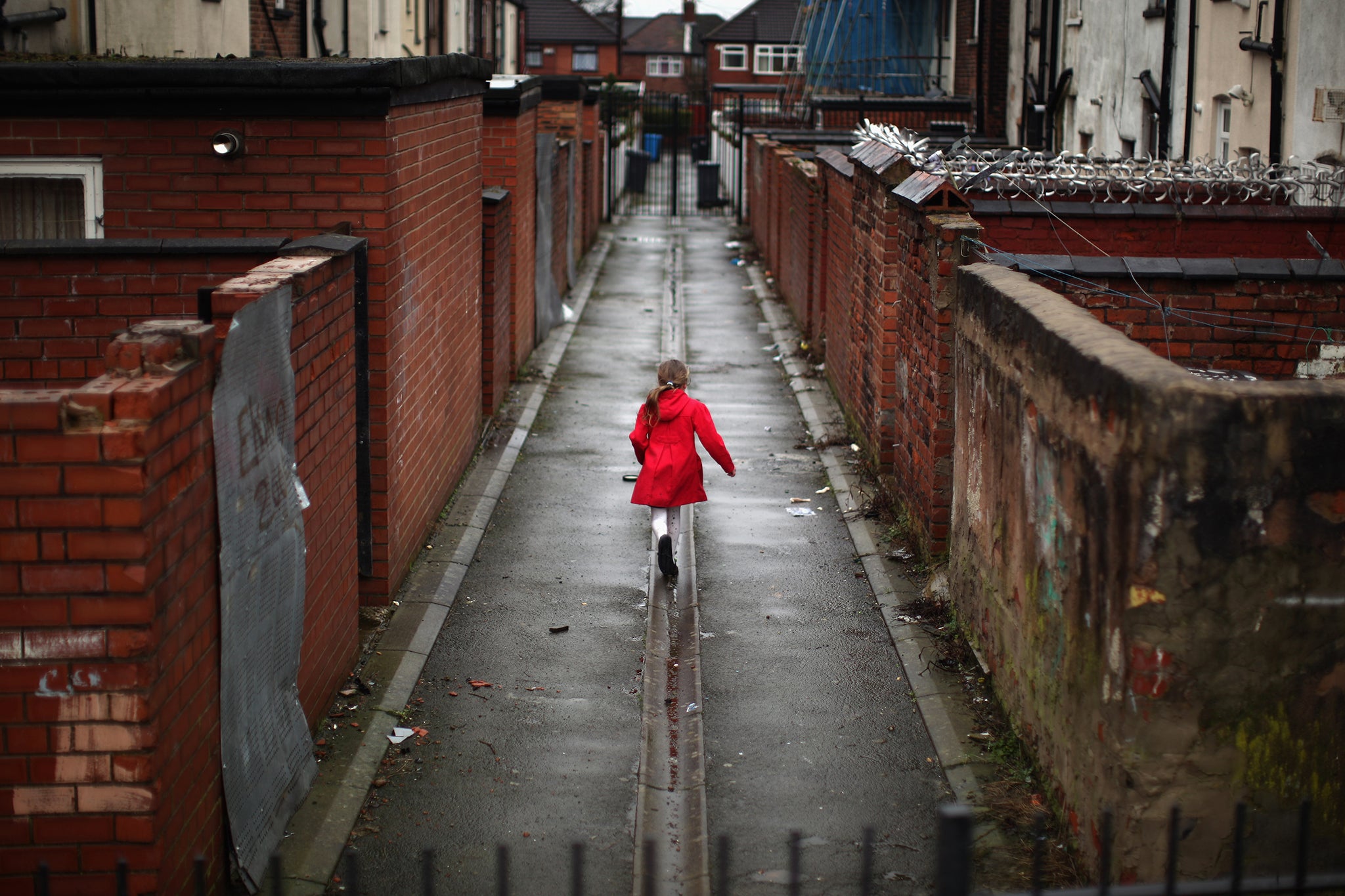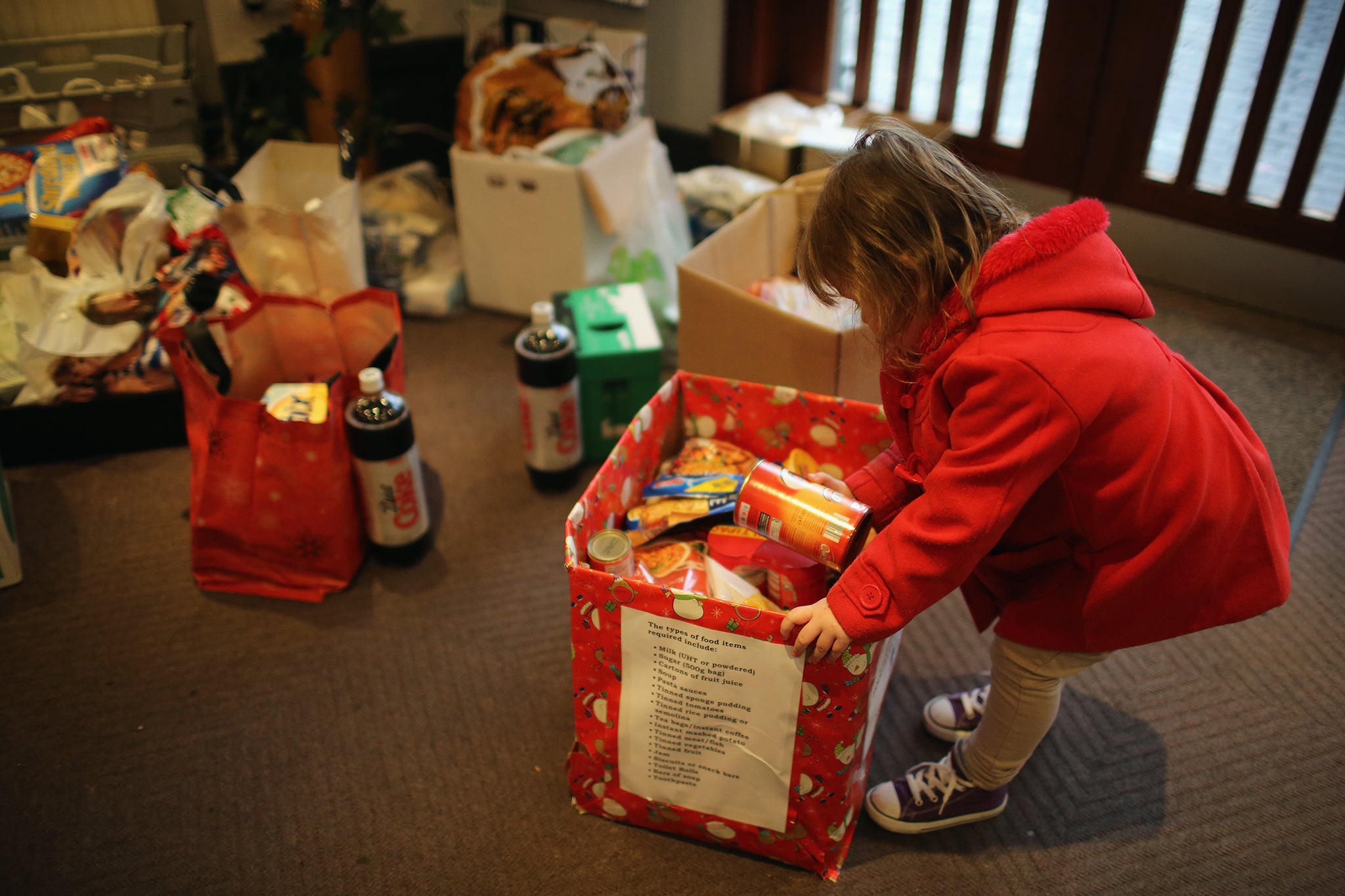More children in the UK are living in poverty than pensioners - the two-child benefit cap needs to go
British children face higher levels of poverty than any other group in society, and with more of them going hungry than ever, this isn’t just about a welfare crisis, writes Terri White. It’s about a government putting them at the bottom of their to-do list

It has been a fairly average year for for child poverty headlines in the UK, in that there have been many, and they’ve been brutal. A national crisis rolling on through 2025, the bodies of our poorest children falling beneath its wheels.
Earlier this year, research laboratory set up by Sarah and Gordon Brown confirmed that deprivation impacts a baby’s brain development. A few weeks after that, it was announced that 30,000 British children have been pushed into poverty since the election by the two-child limit. Yesterday, a report by the food bank network Trussell revealed that Britain is facing a deepening hunger crisis with more than 14 million people going without food because they can’t afford it, and total of 3.8 million children (27 per cent) are among those estimated to be living in homes where people are forced to skip or cut back on meals because of financial concerns.
This bleak picture of children living in poverty is not quite what we were promised. Not in the Labour manifesto – where there was a specific pledge to reduce child poverty – or on the campaign posters the party shared online that pitched their future for our country. The most emotive of which depicted a family flanked by tall wheatgrass, one child on the dad’s shoulders, a second backlit by the sinking, late-afternoon sun, and the words: “Change will only happen if you vote for it.”
Over a year later, that promised powder-blue-sky future has dissolved into fantasy land, with a Labour government now predicted to deliver an even bigger record: 4.8 million children living in poverty by the end of their first parliamentary term (which led Alison Garnham, chief executive of the Child Poverty Action Group to comment, “Record levels of kids living in poverty isn’t the change people voted for.”)
It would certainly represent an extraordinary failure of this government, one that to date, hasn’t impressed with their work on the crisis. “Disappointingly, the UK government has not yet shown the level of political ambition and commitment needed to match the scale of the challenge,” Joanna Barrett, associate head of policy at the NSPCC, tells The Independent.
And the cost? It rains down on our children. The same children who were locked in their homes and out of schools in Covid (lest we forget theme parks opened before the classrooms did) – and emerged with anxiety and delayed development, some not emerging at all. British children have some of the worst health outcomes in Europe (including the lowest wellbeing of all countries) and see relatively little invested in their early care and education (0.5 per cent of GDP versus the likes of France and the Nordics, who spend double that).
Sometimes it feels like we’ve made a national sport out of failing our children – in the UK right now, they face higher levels of poverty than any other group in society (twice that of pensioners). “All children deserve the best start in life,” says Alison Garnham. “But far too many are denied that chance – that’s something that should put us all to shame”.
The shame is only growing. The recent welfare cuts – targeting disability and sickness benefits – announced by the chancellor, Rachel Reeves, in the spring statement “pulled the rug from under people who are ill and disabled”, says Garnham.
With 44 per cent of children in poverty already living with someone who is disabled, the reforms, she says, “will drive child poverty higher still”. On that point, the government (kind of) agrees, their own impact statement putting the number of kids that’ll be pushed into poverty at some 50,000 (or the population of Durham).
Back to basics
Jolene, a neurodivergent mum of three neurodivergent children in Wales (and member of online lived experience documentary project, Changing Realities), knows exactly what those 50,000 kids face. Her own family plunged into hardship after she quit her job to care for her autistic child, who’d increasingly struggled during Covid.
“She stopped going to school, stopped sleeping, stopped leaving the house,” says Jolene. But her daughter’s crisis was met with threats of school absence fines, no offer of alternative provision, and a refusal of help from CAMHS (Child and Adolescent Mental Health Services).
After leaving her job working in an opticians, Jolene entered the “humiliating” and complex world of disability and sickness benefits. It took 18 months to receive PIP (personal independence payment) after an initial refusal by the Department for Work and Pensions (they U-turned just before a tribunal was due to hear an appeal).

“Things were severe,” says Jolene, whose partner worked full time. “We could just about afford food, the absolute basics.” How bad did the situation get? “One day I was going to kill myself,” she says of the substantial period of hardship, fighting for benefits she was entitled to and for support for her daughter. “I thought, this is the only way to get help for my children.”
After three years, Jolene was able to return to work part time, at a job she loves. Finally, she thought, her family’s fortunes were changing. Then, two blows in quick succession: the disability green paper and welfare reforms dropped, and just a week ago, the family’s PIP renewal was refused out of the blue, stripping them of £550 per month instantly.
Now, Jolene is preparing for another PIP appeal, but knows she’ll lose money regardless due to the reforms. “The level of trauma that comes from trying to navigate a system that is supposed to be a safety net…” she says with both sadness and anger. “There is no safety net.”
Far from driving her further into employment, which the government is relying on to ease hardship, she is now unsure how she is going to be able to afford to go to work with her caring responsibilities and the huge cuts to her family’s income. “I don’t know how we’re going to manage. I feel crushed. I was trying so hard to lift myself up from the depths of despair. What more can I possibly do?”
It’s a very good question. With 71 per cent of children in poverty living in a working household (at least one working adult), it’s not even the case that forcing people into employment via hardship is the fix. “Government knows that employment isn’t where the answers lie,” says Garnham, pointing to the actions of the last Labour government, which lifted hundreds of thousands of kids out of poverty. “We know what key levers to pull.”
She points out – contrary to hysteria around spiralling benefits – that we spend £50bn a year less on social security than we did in 2010, and that benefits have been increased by headline inflation only five times in the last 14 years. “That should focus ministers on the need to reinvest.”
Scrap the two-child benefit cap
And there’s no investment more urgently needed than that to scrap the two-child limit – a welfare policy that blocks families in receipt of universal credit or tax credits from support for any child after the second. A policy called “obscene” by Labour in opposition after it was proven to influence women’s decisions on abortion.
Morality (and humanity) aside, the policy is an outlier, globally. Ruth Patrick, professor of social policy at the University of York and lead of Changing Realities calls it an “internationally unique policy” saying that “when we did a comparative investigation looking at the approaches other countries take to providing support for children through their social security system, the UK was the only country which limits support at just two children”.
And yes, when judged against other advanced economies, the UK experienced the largest increase in child poverty from 2014-2021, a rise entirely made up of bigger families (half of all large families now live in poverty).
As a tool wielded by the state then, it’s unparalleled at increasing hardship, forcing an additional 109 children every single day below the poverty line. And while the bad news is that the two-child limit is the single biggest driver of child poverty, the good news is that its end would be the quickest and most cost-effective solution, lifting 540,000 kids out of poverty at a cost of £2.5bn per year.
Too expensive, many cry. Yet, it represents a lower cost per child than any other potential change in the benefits system. And even the most rudimentary maths suggests that with child poverty costing the country £39bn per year currently – and increasing year on year, hitting £40bn by 2027 – by my rudimentary calculations this one measure, would lift 4 per cent of children out of poverty and you could put just over £1.5bn back in the pot straight away.
And that number is even more likely to scream “bargain” when the more indirect savings are counted across an entire lifetime. With improved life chances for children, savings would be made in health, social care, and the criminal justice system when they become adults. Potential higher taxes could be counted on (just like Sure Start, which is now proven to have more than paid for itself in those areas). Not to mention the moral imperative of respecting a child’s most basic human rights to food, to shelter, to education, and life.
Currently, research shows that kids in our most deprived areas are far less likely to achieve a grade 5 or above in English and Maths, but are far more likely to be obese, to lose their teeth, to live in nutritional food deserts, to struggle with their mental health, to be absent or expelled from school, to be homeless, to even die sooner. And in adulthood, those who grew up in poverty earn less, are more likely to have long-term mental health issues.
Still, ministers – including work and pensions secretary Liz Kendall in an interview just last week – have continued to resist calls from the likes of the End Child Poverty coalition (a group of 130 organisations and charities) – to scrap it (“we will only make promises if we show we can afford it and how we’re going to commit to them”). Wait, she says, for the government’s child poverty strategy – now due in June, almost a year after they took office.
For the experts though, scrapping the two-child limit is non-negotiable. “If the government’s child poverty strategy leaves it in place,” says Garnham, “it will not be a credible strategy.”

India, a mum of four kids (aged 1-7) from Suffolk, found herself brutalised by the two-child limit after her life changed overnight. “This was not the plan,” she says of the unexpected separation from her husband while pregnant with her fourth, and youngest, child – an event that pushed her into homelessness and in need of desperate help from the state for the first time.
“A big shock” is how India describes the realisation, while applying for universal credit, that she would receive no support at all for her youngest two children due to the two-child limit – a loss of several thousand pounds. India was then also hit by the benefit cap – an intersecting limit on the amount of benefits all working-age people can claim – that cut an additional £250 a month from her housing benefit.
To say life has been a struggle since is an understatement. She buys her kid’s clothes, shoes and school uniforms second-hand or via donations, has used the local authority’s welfare assistance scheme, but still, after rent and bills, there’s little left.
“Sometimes there’s not enough for food, so I have to use food banks,” she says. “I’ll eat toast or whatever they don’t eat – but I don’t want them to realise [why]. They shouldn’t have to know.” For while the pressure on India is clearly immense and, at times, unbearable – “I’ve had moments where I feel like I’m failing as a parent, you have breakdowns, are in tears” – her only real concern is for her children, and the impact on them of living in poverty.
“I worry about it affecting not just their physical, but their mental health,” she says. She worries that being unable to afford anything extracurricular – “they would love to do swimming lessons” – means they “can’t experience those things that could help them later in life.”Like Jolene, India would love to work, but childcare costs would leave her in even deeper poverty.
Niña from London, now 19 and a youth ambassador for the End Child Poverty Coalition, whose family was pushed into homelessness by hardship, talks about the impact it had on her.
“It was really traumatising,” she says, becoming emotional. “I’m [still] always scared of losing my house, my home.” Growing up, Niña’s own long-term goals “had to take a back seat”. But she says: “It held me back socially more than anything”.
Fellow ambassador Sophie, 21, who grew up in a single-parent family in the northeast, recognises this pressure. “I couldn’t concentrate at school because I was worrying about my sisters and stuff [at home],” she says. “Like realising when I got older that my mam might be skipping meals.”
Now studying at university – due to sheer force of will and graft – Sophie has to work twice as hard as her peers just to keep her head above water. Whether it’s working “three or four jobs in the holidays” or finding (and paying) for a guarantor so she is able to rent a house without a home-owning parent. “I sometimes wonder why I’m doing it when it’s so hard,” Sophie says. “The worry never leaves you, the anxiety.”
All eyes then are now on the government, the party of social and economic equality, to give children the same opportunity to thrive, to learn, to live. Their child poverty strategy is the only real chance to begin fixing this most urgent national crisis, one in which we’ve currently abandoned our poorest and most vulnerable children.
Many others are saying this is a now or never moment. “Unless we see significant action on child poverty, the UK risks becoming an international outlier among richer countries in how badly it treats children living on a low income,” says Ruth Patrick. “The future of this nation and its children depend on it.”



Join our commenting forum
Join thought-provoking conversations, follow other Independent readers and see their replies
Comments